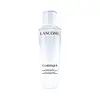What's inside
What's inside
 Key Ingredients
Key Ingredients

 Benefits
Benefits

 Concerns
Concerns

No concerns
 Ingredients Side-by-side
Ingredients Side-by-side

Water
Skin ConditioningButylene Glycol
HumectantC15-19 Alkane
SolventLactic Acid
BufferingSodium Hydroxide
BufferingGlycolic Acid
BufferingAnanas Sativus Fruit Extract
Skin ConditioningFagus Sylvatica Bud Extract
TonicPapain
Skin ConditioningPEG-32
HumectantBisabolol
MaskingCitric Acid
BufferingPhytic Acid
Ascorbyl Glucoside
AntioxidantTocopherol
AntioxidantVitis Vinifera Seed Oil
EmollientCaprylyl Glycol
EmollientHelianthus Annuus Seed Oil
EmollientPropanediol
SolventRosa Damascena Flower Oil
MaskingBenzoic Acid
MaskingRosmarinus Officinalis Extract
AntimicrobialSalicylic Acid
MaskingWater, Butylene Glycol, C15-19 Alkane, Lactic Acid, Sodium Hydroxide, Glycolic Acid, Ananas Sativus Fruit Extract, Fagus Sylvatica Bud Extract, Papain, PEG-32, Bisabolol, Citric Acid, Phytic Acid, Ascorbyl Glucoside, Tocopherol, Vitis Vinifera Seed Oil, Caprylyl Glycol, Helianthus Annuus Seed Oil, Propanediol, Rosa Damascena Flower Oil, Benzoic Acid, Rosmarinus Officinalis Extract, Salicylic Acid
Camellia Sinensis Leaf Water 95%
MaskingWater
Skin ConditioningPropanediol
SolventGlycerin
HumectantNiacinamide
Smoothing1,2-Hexanediol
Skin ConditioningCamellia Sinensis Leaf Extract
AntimicrobialEthylhexylglycerin
Skin ConditioningAdenosine
Skin ConditioningDextrin
AbsorbentEctoin
Skin ConditioningHyaluronic Acid
Humectant3-O-Ethyl Ascorbic Acid
Skin ConditioningGlutathione
Mannitol
HumectantSaccharomyces Cerevisiae Extract
Skin ConditioningButylene Glycol
HumectantCentella Asiatica Flower/Leaf/Stem Extract
Skin ConditioningGlycine Max Polypeptide
Skin ConditioningArginine/Lysine Polypeptide
Skin ConditioningCopper Tripeptide-1
Skin ConditioningDisodium EDTA
Acetyl Tetrapeptide-11
Skin ConditioningCaprylyl Glycol
EmollientAcetyl Heptapeptide-4
HumectantSorbic Acid
PreservativeHexapeptide-9
Skin ConditioningAcetyl Hexapeptide-8
HumectantSodium Hydroxide
BufferingAcetyl Octapeptide-3
HumectantCamellia Sinensis Leaf Water 95%, Water, Propanediol, Glycerin, Niacinamide, 1,2-Hexanediol, Camellia Sinensis Leaf Extract, Ethylhexylglycerin, Adenosine, Dextrin, Ectoin, Hyaluronic Acid, 3-O-Ethyl Ascorbic Acid, Glutathione, Mannitol, Saccharomyces Cerevisiae Extract, Butylene Glycol, Centella Asiatica Flower/Leaf/Stem Extract, Glycine Max Polypeptide, Arginine/Lysine Polypeptide, Copper Tripeptide-1, Disodium EDTA, Acetyl Tetrapeptide-11, Caprylyl Glycol, Acetyl Heptapeptide-4, Sorbic Acid, Hexapeptide-9, Acetyl Hexapeptide-8, Sodium Hydroxide, Acetyl Octapeptide-3
 Reviews
Reviews

Ingredients Explained
These ingredients are found in both products.
Ingredients higher up in an ingredient list are typically present in a larger amount.
Butylene Glycol (or BG) is used within cosmetic products for a few different reasons:
Overall, Butylene Glycol is a safe and well-rounded ingredient that works well with other ingredients.
Though this ingredient works well with most skin types, some people with sensitive skin may experience a reaction such as allergic rashes, closed comedones, or itchiness.
Learn more about Butylene GlycolCaprylyl Glycol is a humectant and emollient, meaning it attracts and preserves moisture.
It is a common ingredient in many products, especially those designed to hydrate skin. The primary benefits are retaining moisture, skin softening, and promoting a healthy skin barrier.
Though Caprylyl Glycol is an alcohol derived from fatty acids, it is not the kind that can dry out skin.
This ingredient is also used as a preservative to extend the life of products. It has slight antimicrobial properties.
Learn more about Caprylyl GlycolPropanediol is an all-star ingredient. It softens, hydrates, and smooths the skin.
It’s often used to:
Propanediol is not likely to cause sensitivity and considered safe to use. It is derived from corn or petroleum with a clear color and no scent.
Learn more about PropanediolSodium Hydroxide is also known as lye or caustic soda. It is used to adjust the pH of products; many ingredients require a specific pH to be effective.
In small amounts, sodium hydroxide is considered safe to use. However, large amounts may cause chemical burns due to its high alkaline.
Your skin has a natural pH and acid mantle. This acid mantle helps prevent harmful bacteria from breaking through. The acid mantle also helps keep your skin hydrated.
"Alkaline" refers to a high pH level. A low pH level would be considered acidic.
Learn more about Sodium HydroxideWater. It's the most common cosmetic ingredient of all. You'll usually see it at the top of ingredient lists, meaning that it makes up the largest part of the product.
So why is it so popular? Water most often acts as a solvent - this means that it helps dissolve other ingredients into the formulation.
You'll also recognize water as that liquid we all need to stay alive. If you see this, drink a glass of water. Stay hydrated!
Learn more about Water